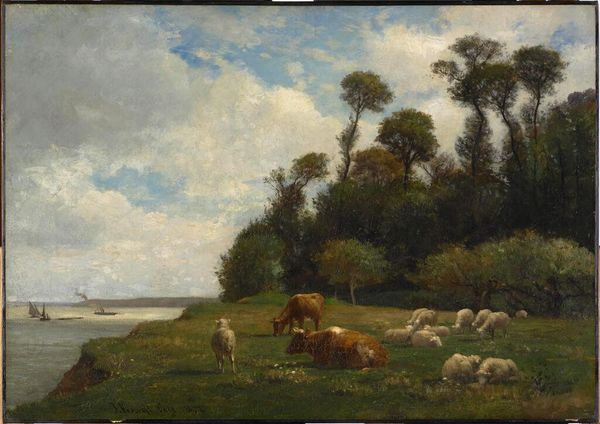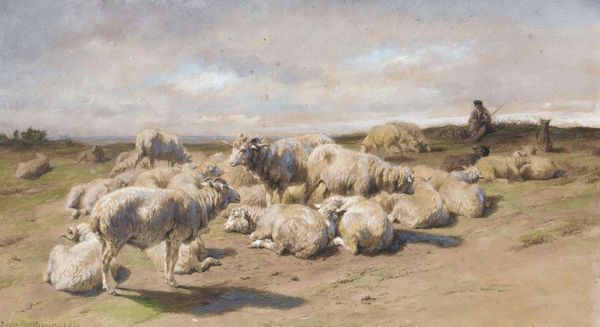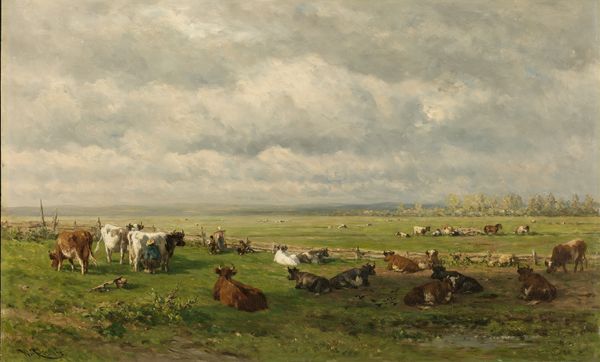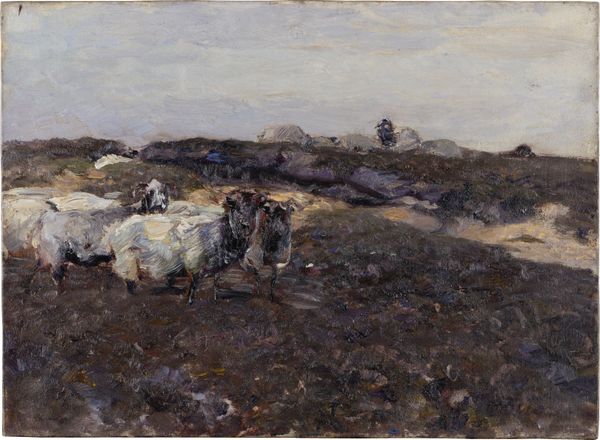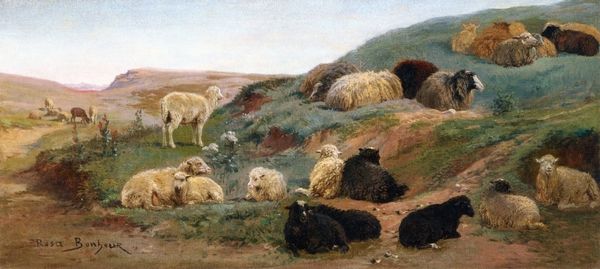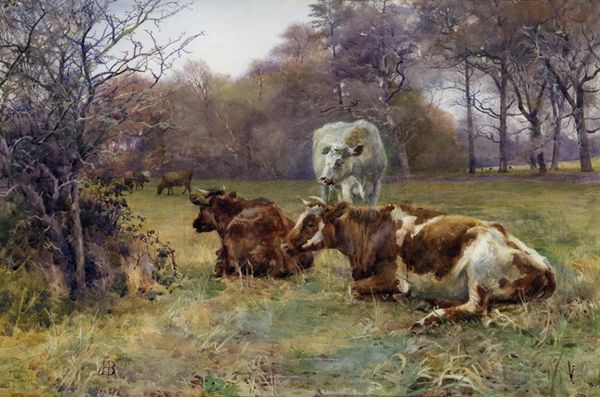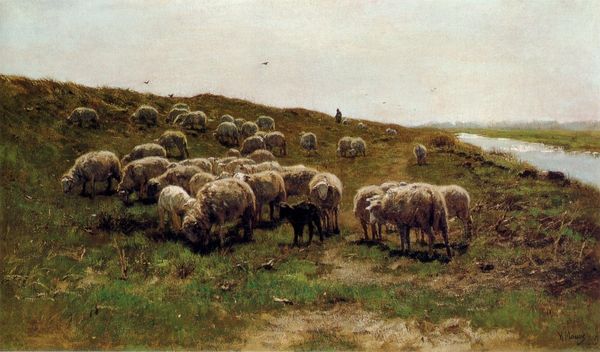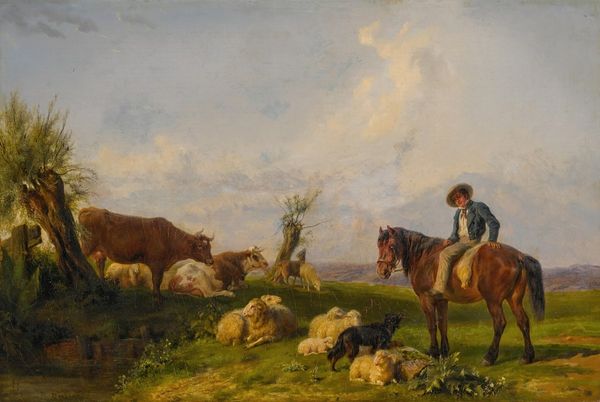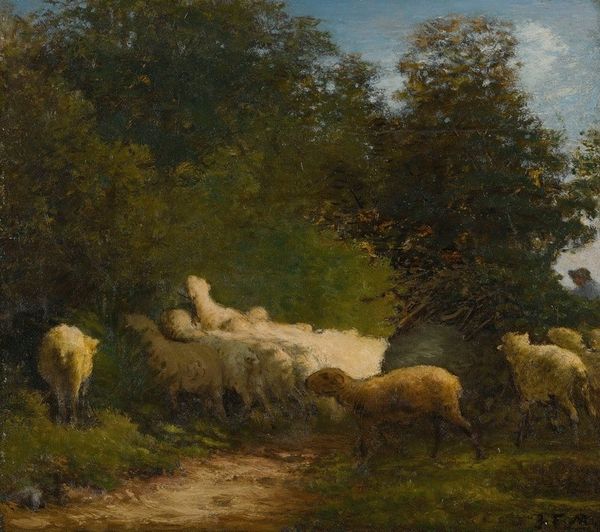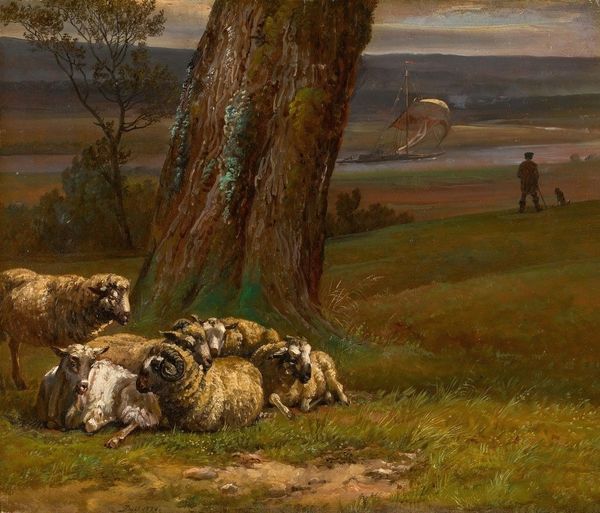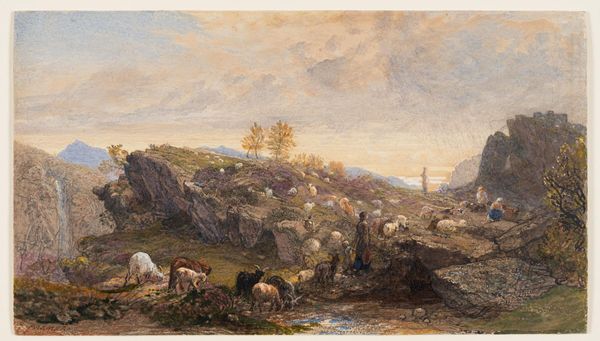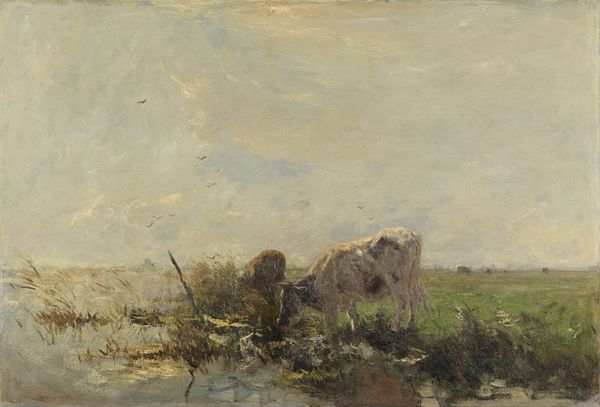
painting, oil-paint
#
portrait
#
16_19th-century
#
painting
#
oil-paint
#
landscape
#
oil painting
#
romanticism
#
animal portrait
#
genre-painting
#
realism
Copyright: Public domain
Curator: Here we have “Sheep by the Sea” by Rosa Bonheur. Though undated, its style places it within her oeuvre of animal portraits and landscapes. Bonheur was well-known for her realist depictions of animals. Editor: I find it quite serene. The palette is so muted and calming, yet the composition keeps your eye moving. The wool on those sheep looks remarkably tactile. I wonder about the breed. Curator: The materiality certainly speaks to Bonheur’s skills. She captured the nuances of light and shadow, conveying the texture of wool through layered oil paint. Sheep farming, and the wool industry were significant in 19th-century Europe. This scene celebrates that industry in a quite literal fashion. Editor: That’s a really good point. There's a tension there too though. There's a prevailing view of Romanticism, but it’s tempered by Realism and that adds a layer of social commentary I did not previously expect. One ponders Bonheur's engagement with these socio-economic realities. Was she examining rural labor through the portrayal of livestock, or presenting some ideal vision? And to what degree were her subjects dictated to her via the societal values of the art market? Curator: Her reputation also adds depth to the work. Bonheur's deliberate navigation of the Parisian art world, including obtaining permits to wear trousers for her artistic pursuits, reflects a conscious effort to establish herself professionally in a man’s world. The gendered aspect of painting at the time, in which landscape paintings were seen as "lesser," can also offer a compelling way to discuss "Sheep by the Sea". It feels almost political in that reading. Editor: Absolutely. Looking at this pastoral image again, the fact it was created by a woman who deliberately challenged societal norms and gender roles adds even more power. We need to remember that museums and galleries reflect society's values as much as the artist's. Bonheur's popularity during her lifetime reflects both her artistic skills and the evolving role of women. Curator: The scene's timeless appeal lies, perhaps, in this interesting interplay between reality and idealization, labor, gender, and art history. Editor: It encourages us to consider not just what we are seeing but who painted it and the context in which this art came to be celebrated.
Comments
No comments
Be the first to comment and join the conversation on the ultimate creative platform.
